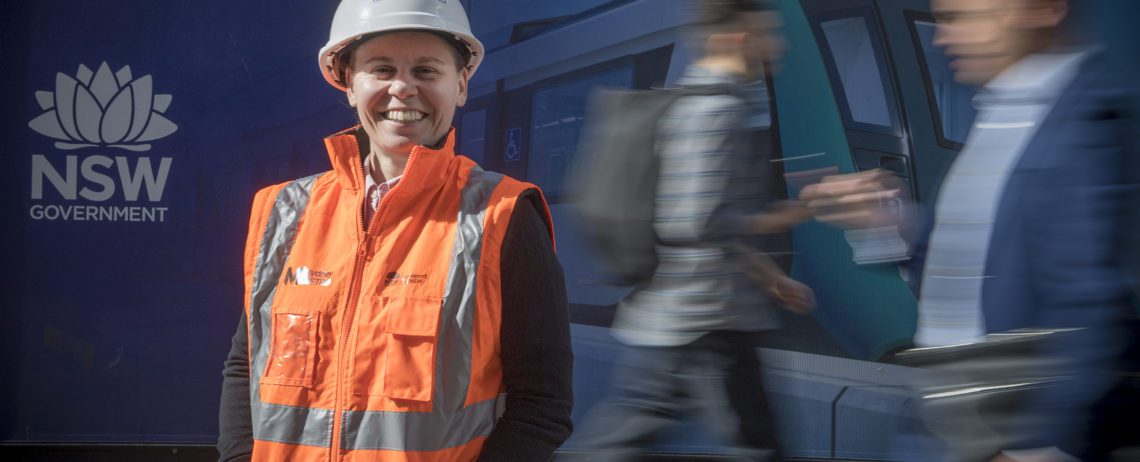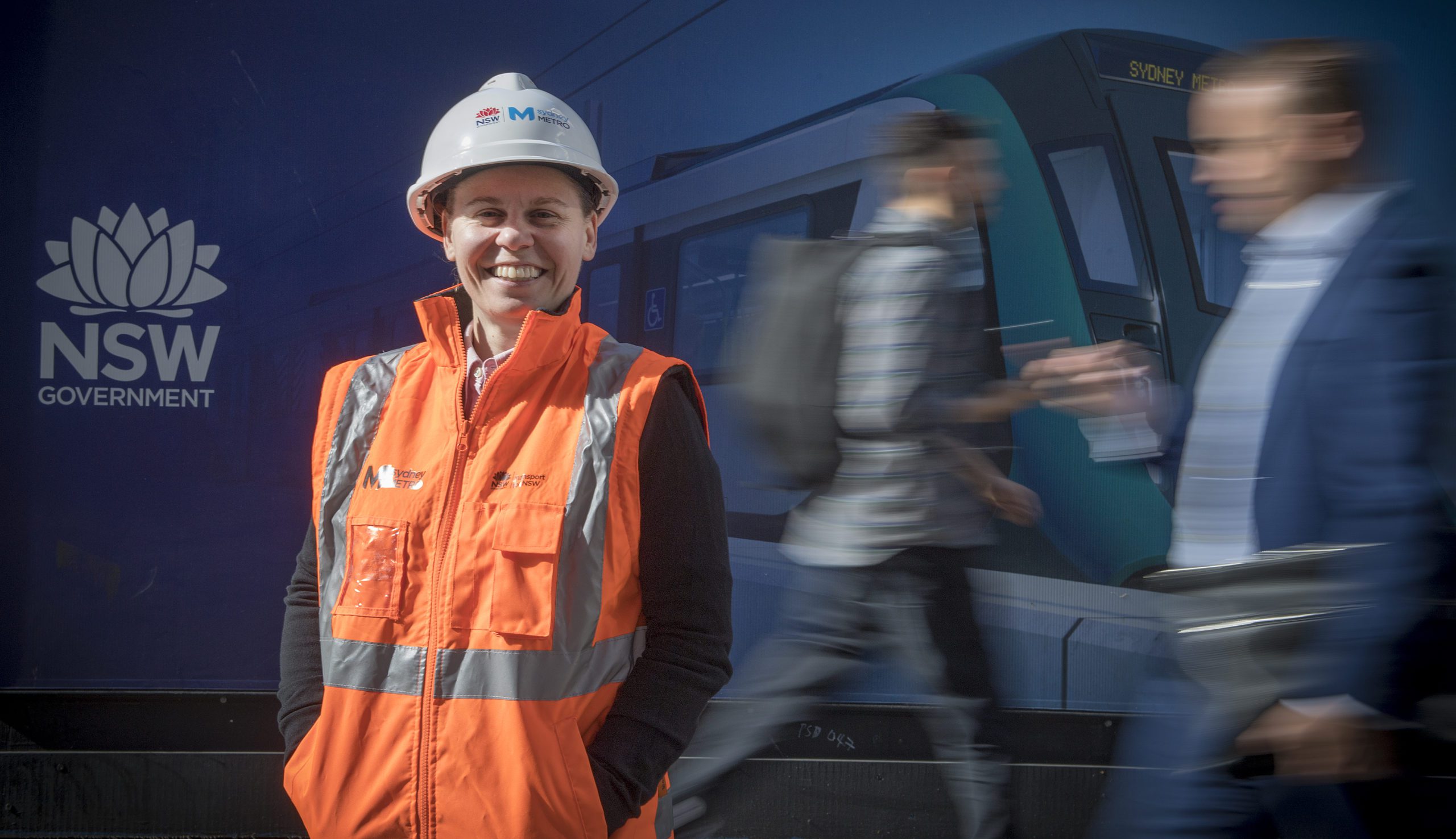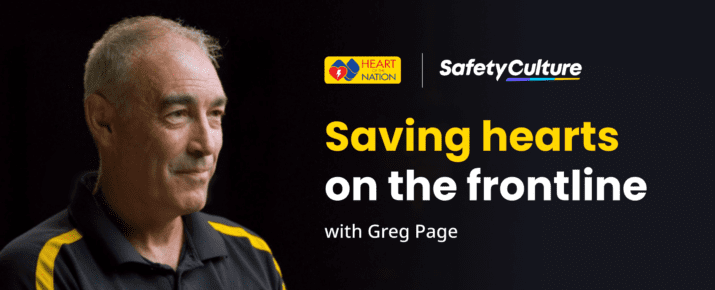Taking Stock: Rerouting the transport industry post-pandemic
Ask The Experts | Industry Trends | By | 4 May 2022 | 4 minute read

Such has been the pace and breadth of change in the last few years that the world is awash with predictions about just what the post-pandemic ‘normal’ might look like. With no shortage of expert opinions, we decided to go straight to the source — industry leaders in the thick of it, handling every hurdle and putting in the hard yards.
We spoke to Louise Howard, Deputy Executive Director of Health & Safety at Sydney Metro. Together, we dug into pandemic lessons learned and how she’s rethinking the world of work. Here’s a look back—and a lens on what’s next.

Meet Louise Howard, Deputy Executive Director Health & Safety at Australia’s largest public transport infrastructure project, Sydney Metro. Sydney Metro is revolutionizing the way Australia’s biggest city travels. The organization has big plans — by the end of the decade, their network will be expanded to include 46 stations and more than 113 kilometres of world-class metro. Here’s how they adapted to the impacts of the pandemic.
What new processes did you create in COVID-19 that will continue long after the pandemic?
Sydney Metro has done a great job adapting to the impacts of the pandemic. The health and safety of our people was at the forefront of our minds and this resulted in new initiatives and processes such as:
- Leveraging our current use of SafetyCulture (formerly iAuditor), we developed a Covid Safe checklist, using the data to create a Power BI Dashboard so we could track levels of compliance with Covid controls across our workforce. We are working hard this year on focusing all of our SafetyCulture (formerly iAuditor) checklists on control effectiveness rather than controls just being in place.
- Designated lunch break for the entire organization between 12-1pm which is known as ‘screen-free time’. We want our people to connect with their families, exercise, eat well and just have time to breathe.
- Collaboration spaces were created on Microsoft Teams to minimize email traffic, and encourage discussion and sharing.
What does “living with COVID” look like for your industry?
Living with COVID in the infrastructure sector will look somewhat different to pre-pandemic times. For my workplace, it is now a hybrid work environment, with a mixture of in-person and online meetings. Recruitment is broader encompassing the whole of NSW location rather than just Sydney based and there is a more significant investment in the digitization of how we work and greater focus on our systems. There is a messaging change around in-person activities being meaningful and focused on connection and collaboration. I see this is as a positive improvement. There is much more acceptance of flexibility at work across the sector and this has resulted in enhanced productivity and a better employee proposition.
What’s the top focus for your industry to tackle in order to be able to effectively “live with COVID”?
There is a need for a robust and practical business continuity plan. It is no longer a stagnant document that sits on a dusty shelf, it needs to be a useful plan to keep your organisation moving during a crisis. Pre-pandemic, I would always talk about the continuity of my team and the work we do if I or another senior leader was ‘hit by a bus’. We now all have had a real-life version of this with a global health pandemic and organizations are still trying to get this right.
Identify your key people, systems, and information and refine your business priorities. If this hasn’t been done during the height of the pandemic then the time now.
What’s the biggest challenge your industry is facing right now?
Staff shortage is the biggest issue facing the public infrastructure sector. This was a problem for us pre-pandemic and has only been intensified by the impacts of COVID. To compound the problem Australia’s demand for public infrastructure is forecast to reach extraordinary levels over the next three years.
The workforce consequences were significant prior to the pandemic and projected supply and demand with projected labour shortages lasting from late 2020 to late 2024, peaking at a gap of almost 93,000 additional workers being required in early 2023. At this peak, demand is 48% higher than supply. Meeting this demand would require growth of 25% per year over the next two years, which is more than eight times higher than the projected growth rate of 3.3% p.a. Between 2021 and 2024 shortages are anticipated in these occupational groups: project management professionals; engineers, scientists and architects; structures, civil trades and labor; and finishing trades and labor
(Source: Infrastructure workforce and skills supply. A report from Infrastructure Australia’s Market Capacity Program, Oct 2021)
What is the biggest industry opportunity you see for positive change in a post-pandemic world?

There are a few great opportunities, my two highlights would be:
- A continued focus on our people’s health. As you would expect this was front and center during a global health pandemic, the continuation of this needs to happen. Employers need to consider a whole-person view in regards to health, the physical, mental and social aspects of our people, and the impacts (positive or negative) it can have. Allowing people to be supported by bringing their whole selves to work is a win-win for everyone.
- The use of a hybrid work environment is creating accessibility to the sector by groups who may not have previously seen a career in our industry. Flexibility in roles becoming the norm will encourage different forms of employment such as job share and part-time arrangements and hopefully attract a more diverse group of individuals to work on these incredible projects.
With the learnings you’ve gained from the pandemic, what advice would you give people in your field?
Always challenge the status quo. COVID created the platform that demonstrated how we could adapt and implement a different work environment very rapidly. We threw out the rule book of pondering, planning, workshopping, testing and piloting and replaced it with action, experimentation and iteration. This covered everything from leadership, ways of working, organizational culture and business priorities.
My call to action is to examine everything you were doing and are now doing and question its value, alignment with your priorities and establish if any improvements can be made. If the last two years has taught us anything, for me it is to continue to listen to your people. There has not been a rule book for COVID, we have had to rely on each other so don’t let go of the positives from this unifying experience.
Important Notice
The information contained in this article is general in nature and you should consider whether the information is appropriate to your specific needs. Legal and other matters referred to in this article are based on our interpretation of laws existing at the time and should not be relied on in place of professional advice. We are not responsible for the content of any site owned by a third party that may be linked to this article. SafetyCulture disclaims all liability (except for any liability which by law cannot be excluded) for any error, inaccuracy, or omission from the information contained in this article, any site linked to this article, and any loss or damage suffered by any person directly or indirectly through relying on this information.





